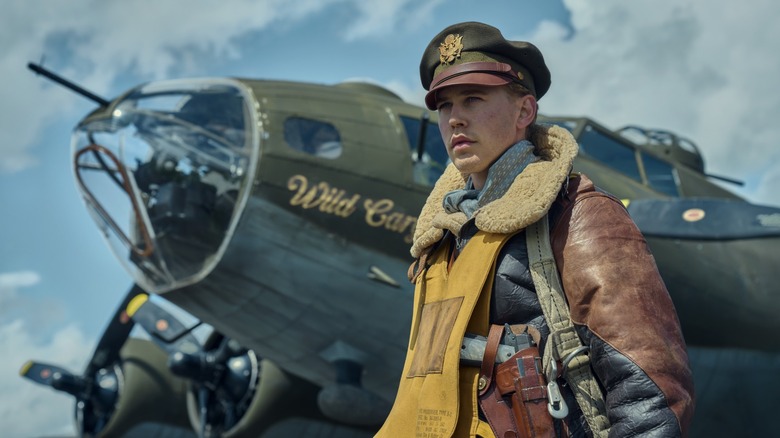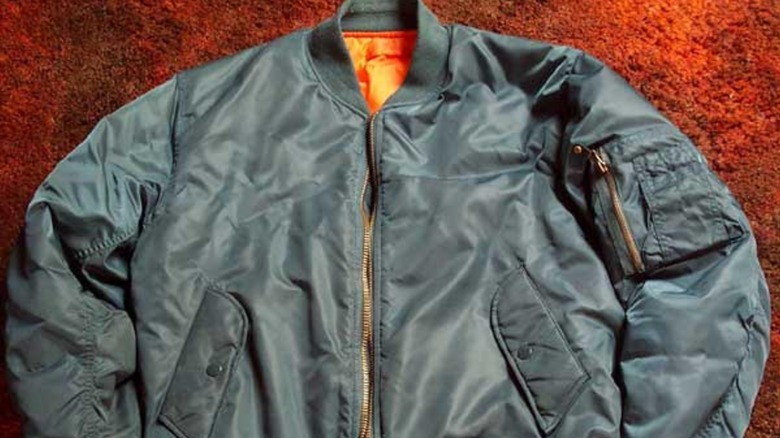The Reason Why Air Force Pilots Wore Bomber Jackets With An Orange Lining
Ever since the earliest days of aviation, pilots had to wear appropriate clothing to keep warm at altitude. This was especially true during World War I, when most aircraft had open cockpits. From this necessity, the bomber jacket was born, and it provided the needed warmth to keep pilots going under challenging conditions. Fast-forward to World War II, and planes had enclosed cockpits, but flew considerably higher, which presented a problem.
The higher the altitude, the colder it got, and the heating systems of WW2 planes weren't the best. More innovation was put into bomber jackets of the era. The Type A-2 leather flight jacket is the most famous example, and it's likely what most people think of when talking about bomber jackets. Bomber jackets were so beloved that they became a staple of aviation, and they went on to inspire civilian options like the letterman jacket, which has a similar design. One thing that was somewhat unusual about the MA-1 bomber jacket that influenced numerous designs was its bright orange lining.
You might think this was a strange choice, but hardly anything the military uses is without meaning. The purpose of the MA-1's orange lining was related to safety and visibility, though not all jackets, like the A-2, had orange linings. If a pilot or crewmember were to survive a crash, they needed to be rescued. One way to make their chances better was to improve visibility, so they'd invert their MA-1 jackets with the lining facing out. Think of them as comparable to construction worker safety vests — they're designed to be seen, but only if the wearer wishes.
Orange-lined bomber jackets made a comeback
The U.S. military has employed several bomber jackets throughout its history. Each servicemember who was eligible received a specific jacket, depending on when and in which branch they served. The A-2, which is iconic of one of the most legendary planes of WWII, the B-17 Flying Fortress, was phased out in 1943 when it was replaced by the G-1, worn by the Army and Navy. That's the jacket Tom Cruise wears in "Top Gun" after flying his two-seat F-14 Tomcat, and it's a favorite item of aviators, past and present.
The B-3 was designed for truly high-flying aircraft, and there are many different examples of jackets from the 20th century. The Air Force, which was born of the U.S. Army Air Forces, didn't have the opportunity to wear the A-2, but that's since changed. In the lead-up to the Air Force's 40th anniversary in 1987, efforts were made to introduce the A-2 to a new generation of pilots. It took some effort, and the jackets had to be redesigned because the original drawings were lost, but the Air Force made it happen.
Nowadays, the bomber jacket worn by those serving in the Air Force is a modern recreation of the original, and it looks just as spectacular. The regulation limits their use to "officers or enlisted personnel who are in mission-ready, emergency-mission-ready, mission-capable, or mission-support billets assigned at or below wing level." They can be retained upon retirement and are a beloved icon of the Air Force and aviation history. Unfortunately, the modern A-2 jackets don't feature an orange lining like the modern MA-1 in the photo above.

